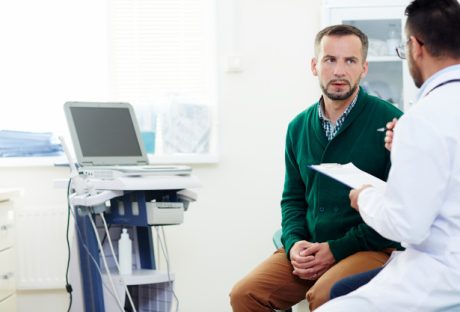During menopause, estrogen levels in your body drop. Some women experience unpleasant symptoms such as hot flashes, night sweats, and vaginal dryness. Hormone Replacement Therapy (HRT), also known as Estrogen Replacement Therapy (ERT), is the most effective way to treat these menopausal symptoms.
HRT involves estrogen-containing medications that replace the hormones that are no longer produced after menopause. Studies have found that hormone therapy also helps to prevent bone loss and reduce fractures in postmenopausal women.
If you want to relieve the symptoms of menopause, understanding the advantages and disadvantages of hormone replacement therapy can help you determine the right type for you. Highlighted below are the four types of HRT for menopause.
Here are the 4 types of Hormone Replacement Therapy:
1. Estrogen Pills
One of the most common forms of HRT is an oral medication. The pills include conjugated estrogens and are typically taken once daily without food. However, some have more complicated dosing schedules.
Pros
Like other forms of HRT, estrogen pills can lessen or remedy the bothersome symptoms caused by menopause. They also reduce the risk of osteoporosis (weakening of the bones).
Cons
Estrogen, on its own, slightly increases the risk of thrombosis and stroke. When used with the hormone progesterone, the risk of heart disease and breast cancer is heightened.
Like other HRT treatments, oral estrogens have side effects.
These include painful swelling of the breasts, vaginal discharge, headache, and nausea. People with liver problems should opt for other forms of estrogen as oral estrogens can be hard on the liver.
In addition, estrogen may not be absorbed, especially if you are taking certain medications or if you have stomach problems.
2. Skin Patches
Another type of HRT is skin patches, with examples including Alora and Estraderm. There are also combined estrogen and progesterone skin patches. Follow the instructions and replace the patch once or twice weekly.
Pros
First, the patch is convenient. You can stick it without worrying about taking oral medicine every day. The patch is also great for people with liver ailments as the estrogen goes passes directly into the bloodstream, avoiding the liver. Studies have proved that patches do not present a risk of thrombosis to postmenopausal women compared to oral estrogens.
Cons
Estrogen patches do have side effects. These include painful swelling of the breasts, vaginal discharge, headache, and nausea. The patch can also irritate the skin on which it is applied.
Do not expose estrogen patches to high temperatures or direct sunlight. The heat can bring about the rapid release of estrogen from some. Therefore, do not use a tanning bed or sauna when wearing an estrogen patch.
3. Topical treatment
Estrogen gels, creams, and sprays are another way of incorporating estrogen into your body. Like skin patches, this type of estrogen treatment is directly absorbed into the blood. They are normally administered once a day.
Pros
Since these topical estrogen treatments journey directly into the blood, they are low risk for people with liver problems.
Cons
A possible problem with the use of this type of estrogen treatment is that the gel, cream, or spray can be rubbed or washed off before being completely absorbed. Always let the treatment of dry before dressing and apply after bathing.
Since estrogen is directly absorbed through the skin, do not let your family members come into contact with these creams or gels. Ensure you clean and dry your hands after using the medication.
4. Vaginal Suppositories
These types of estrogen treatments are applied directly to the vagina. These treatments are most suitable for women who suffer particularly from vaginal dryness, itching, pain, or burning sensation during intercourse. The medication includes vaginal tablets, creams, and vaginal rings.
The exact dosing schedule depends on the product. However, the vaginal ring must be replaced every three months.
Pros
Research has proved that vaginal suppositories are more effective in treating vaginal symptoms of menopause than other types of estrogen treatment.
Some vaginal rings produce low doses, impacting the surrounding region only. This is favorable since they do not subject the whole body to high amounts of estrogen. In theory, this reduces the risks of estrogen treatment and is a safe method to reassure women unable to receive systemic treatment.
Cons
Vaginal suppositories containing low amounts of estrogen are only useful for menopausal symptoms brought about due to hysterectomy. They do not treat other symptoms, such as hot flashes. Although high doses of suppositories offer solutions to these symptoms, they may carry risks of cancer. Most doctors do not recommend long-term vaginal estrogen therapy in women who still have a uterus, as this may escalate the threat of endometrial cancer.
In conclusion, work closely with your doctor to decide on the best option from the various available hormone replacement therapies. Also, talk to your physician about how long you can take HRT and how to limit potential risks.
Read Also:






















